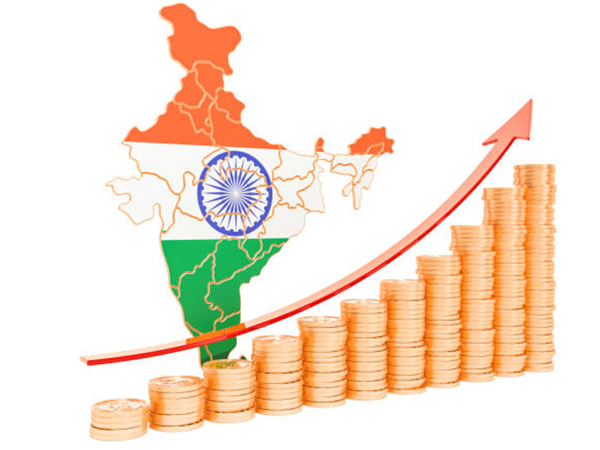
New government to inherit strong economy, focus on making India developed nation by 2047
NEW DELHI : India’s world record beating economic growth rate together with robust tax revenues, a fast expanding digital and financial infrastructure, and a strong manufacturing sector, will give the new government, a base for unleashing next generation reforms that may make the country a developed nation by 2047.
The new government will however have to tackle with problems like unemployment and rural distress, which seemed to have played a major role in voting pattern in states like Uttar Pradesh, while also keeping inflation under control.
Given that no party, including BJP, have a clear majority of its own, tough reforms like big ticket privatisation and labour law reforms may take a backseat.
The new government will have to build upon the 8.2 per cent GDP growth recorded in 2023-24 and carry on with the reforms to make India a $5 trillion economy in the next couple of years, and a developed nation by 2047.
Policy experts are unanimous in their view that the government is likely to continue its focus on infrastructure-led growth, investor-friendly policies, enabling reforms, and facilitating ease of doing business.
Last week, S&P Global Ratings had said that historically, India has been on a high growth path with national consensus on key economic policies.
“No matter who the incoming government is, the pro-growth policies, sustained infrastructure investments, the drive to reduce fiscal deficit — these things have produced very good outcomes and we believe this will continue in the coming years no matter who is in charge,” S&P Global Ratings Analyst, YeeFarn Phua said.
EY India Chief policy advisor, DK Srivastava said, the Aatmanirbhar strategy, especially focusing on knowledge intensive employment generating and strategic manufacturing, will serve India well in the long run while providing scope for increasing both services and goods exports.
“The new government will find a solid foundation of the economy, ready to take off with the objective of fulfilling India’s aim of becoming ‘viksit’ in the next 25 years,” Srivastava said.
Under the Modi government’s 10-year tenure, India has become the fifth largest economy, from 11th globally, shaking off its image as a “fragile” economy, prior to 2014.
The new government, will have its eyes set on taking India among the top three economies in the world. The target is “more likely” to be realised by 2027-28 fiscal, according to the 16th Finance Commission Chairman, Arvind Panagariya.
Currently, the size of the Indian economy is $3.7 trillion, and it is expected to become $7 trillion by 2030. RBI has projected a 7 per cent growth rate for the current fiscal.
Deloitte South Asia CEO, Romal Shetty said, India is firmly on the growth trajectory as the world’s fastest-growing economy, and a key player in the global supply chain.
“With the new government, we expect second-generation reforms driven by technology to make India a global hub of innovation and a thriving digital economy. We must further accelerate reforms to strengthen ease of doing business, boost inbound investment, and solidify India’s position as the top destination for GCCs (global capability centres), and high-tech manufacturing, with a focus on jobs,” Shetty said.
In fact, reflecting the buoyant sentiments, S&P Global Ratings last week, upgraded India’s outlook to positive, from stable, and said it could upgrade India’s sovereign rating in the next one to two years, if the government continues reforms, and adheres to the path of fiscal consolidation.
Last week, Moody’s Ratings, also said it expects policy continuity after the general election, and continued focus on infrastructure development.
Nangia Andersen India Chairman, Rakesh Nangia, said the investors’ community expects continued policy reforms, particularly in labour laws and the privatisation of state-owned enterprises.
“Investors are also keen on prudent fiscal management, focusing on reducing the fiscal deficit, while promoting growth through strategic investments. This combination of reforms and fiscal discipline, is expected to create a favourable environment for sustained economic growth, and increased investor confidence,” Nangia said.
Nangia further said that investors are also eager to see a further simplification of India’s regulatory framework, more transparent, and predictable policies that can enhance the ease of doing business.
“This regulatory clarity, is crucial for attracting more Foreign Direct Investment (FDI), and positioning India as a key manufacturing hub, driven by supply chain diversification. In recent years, there has been substantial FDI inflow into sectors such as manufacturing, computer services, and renewable energy, reflecting India’s growing appeal as a destination for global investment,” Nangia said.
